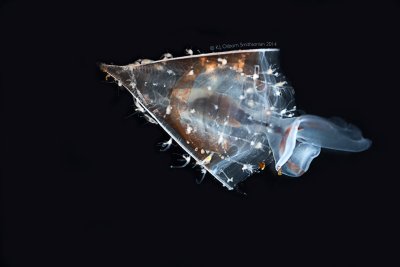News
The vote for International Mollusc of the Year 2024 is open - LOEWE-TBG sequences the DNA of the winning mollusc

Last year, the Chilean Abalone (Concholepas concholepas) won the race for the title of "International Mollusc of the Year 2023" and is now ready to hand over the title to its successor. Five molluscs are also in the final in 2024, and the favourite can be chosen by all interested parties in an online vote until 14 April 2024. The competition is entering its fourth round this year and was launched by the LOEWE Centre for Translational Biodiversity Genomics (TBG), the Senckenberg Gesellschaft für Naturforschung and Unitas Malacologica (the worldwide society for malacologists and malacology). The main aim of the competition is to raise awareness of the diversity of molluscs and their protection. Scientists from LOEWE-TBG will fully sequence the genome of the winning species.
The finalists for the "International Mollusc of the Year 2024" include the Wavy Bubble Snail (Micromelo undatus), the Glow Stick Snail (Phuphania crossei), the Coosa Fiverigde (Amblema elliottii), the Wavy Sea Butterfly (Clio recurva) and the Atlantic Brief Squid (Lolliguncula brevis). They were selected by a jury of scientists from more than 50 nominations. “Once again this year, we are delighted with the species that have been nominated from all over the world. The diversity in the mollusc phylum is so great, and there are many fascinating characteristics to discover,” says Dr Carola Greve, head of the laboratory centre at the LOEWE Centre TBG. “However, as complete genome sequencing is only available for relatively few molluscs, we want our competition to contribute to a better understanding of this animal phylum at the genomic level of species diversity and to be able to trace evolutionary developments, relationships and adaptive abilities”.
Further information on the finalists and the online voting can be found here.

